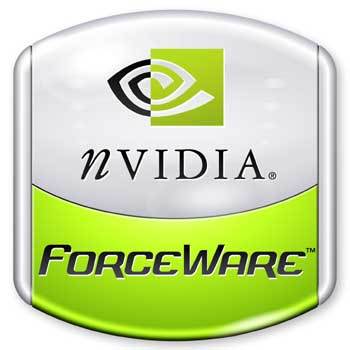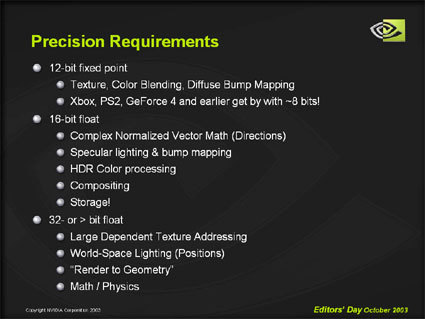NVIDIA Puts Its (New) Cards on the Table
NVIDIA ForceWare V52.16
NVIDIA's newest driver release, which should be publicly available by the time this article is published, carries the name ForceWare and replaces the Detonator series. In addition to the normal improvements and new settings for the multi-monitor software nView, NVIDIA put a lot of effort into improving DirectX 9 shader performance. At the heart of these improvements lies the so-called "unified compiler", which takes shader code, puts it in the optimal order and shape and then sends it to the GPU - in real-time. The goal is not a reduction in floating-point precision, but instead a re-ordering of the code to make optimal use of the chip's resources. The quality of the output remains unchanged. This kind of compiler optimization has been common in the CPU-world for years.
Shader optimizations such as reduced floating-point precision still require individual attention. Until now, these changes had to be made manually in the final version of the shader code - a time consuming job. In the latest version of Microsoft's High Level Shader Language (HLSL), programmers can now already choose the floating-point precision when writing the code.
While ATi's current DirectX 9 hardware always renders with 24Bit precision, NVIDIA's GeForce FX cards can distinguish between several levels of precision. At the "full precision" setting, the chip uses 32Bit, while "half precision" mode uses only 16Bit precision. Additionally, the chips also support a 12Bit integer mode. NVIDIA sees this as a major advantage of their architecture, since the level of precision can be chosen individually for each shader. Shaders that don't require full precision can therefore be run at a lower setting for a speed increase. On the flipside, this also makes programming for NVIDIA hardware all the more difficult and complex. The company hopes to compensate for this with its close contacts and intensive support of the game developer community, which is where the "...the way it's meant to be played" program comes in.
Indeed, these new drivers net the FX cards a noticeable performance increase in DirectX 9 games - at least in the DX9 games that are out today. How the FX cards will fare in upcoming games and how they will stack up against the competition remains to be seen. But if this driver release is any indication, things are looking up.
Get Tom's Hardware's best news and in-depth reviews, straight to your inbox.
Current page: NVIDIA ForceWare V52.16
Prev Page Gainward CoolFX PowerPack! Ultra/1800XP "Golden Sample", Continued Next Page NVIDIA ForceWare V52.16, Continued

